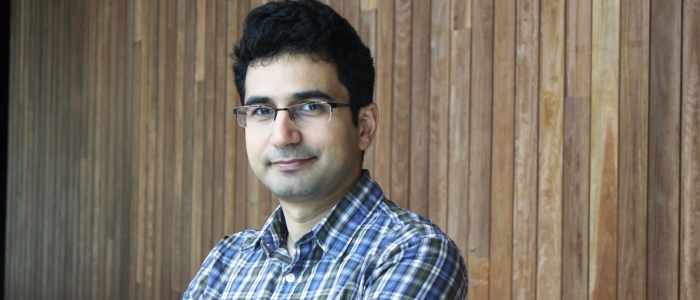News
3D printing bone tissue
Jun 28 2022
Fog, flight delay, evacuation, fire alarm, evacuation.

Ali Mahmoudzadeh’s welcome to Australia has been a bumpy ride.
Fog delayed the PhD candidate’s flight into Sydney, which was diverted to Brisbane.
“That was quite an experience,” Ali said.
Having sat idle on the tarmac in Brisbane, Ali’s plane was evacuated because the passengers had exceeded the carrier’s waiting time limit aboard.
Then a new crew had to be flown up from Sydney due to the original crew also exceeding a time constraint aboard the plane.
Finally landing in Sydney after the 12-hr side trip to Brisbane, Ali arrived at Wollongong at 1am. Sleep at last.
Uh-uh. At 4.30am a fire alarm blared at Ali’s accommodation, forcing another evacuation and terminating any hope of recovery from the Brisbane disruption.
Birds lift spirits
However, following only a few hours’ sleep, native Australian birds recharged Ali’s batteries on his first morning at ACES as he set to begin his experimental work on his solar cell device.
“The first thing I noticed was the variety of birds,” he said.
“I loved it. I was shocked by seeing those rainbow parrots flying around as if they are domestic birds.
“I took pictures of them and sent them off to family – ‘that’s my first day here and look what I saw!’”
Spotlight on solar cell
During his six-week visit the electrical engineering graduate will focus on improving his integrated solar cell battery.
The ‘proof of concept’ device, based on a redox flow battery and dye-sensitised solar cell technology, is original because it harvests and stores energy simultaneously in the one unit.
“What I built is actually showing that this design works but it is far from being competitive in any aspect in the market, but the actual integrated device … the concept is novel,” Ali said.
“There are some back-to-back fabrication … so you make a battery and a solar cell and use the same packaging, but there isn’t a device itself that can do both things.”
Ali calls on team ACES
The University of British Colombia student is drawing on ACES’ talent pool to improve the performance of the solar cell and capacity of the battery.
“Because of the interdisciplinary nature of the solar battery project, I need to seek help from chemists, electrochemists, fluid dynamic experts and those who are insightful on the dye-sensitised solar cell physics,” he said.
“Having all these people under the same program in AIIM, accelerates the development of my system significantly.”













